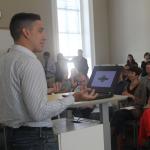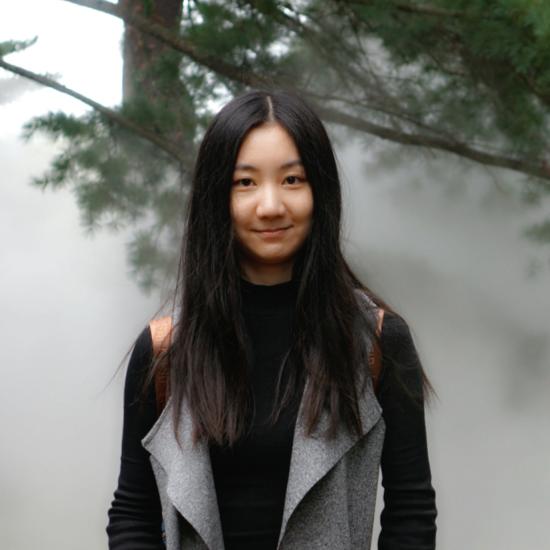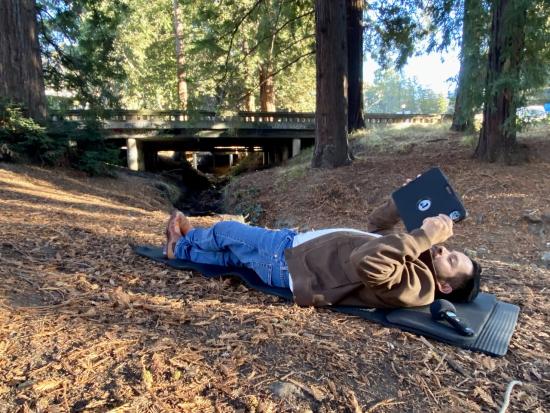In the last few decades, technology has advanced at an unprecedented pace, bringing the world portable computers, virtual reality, open-access generative AI, and more. However, the pursuit of innovation has historically come at the detriment of the environment as well as obscuring important historical facts surrounding the environment. In response, School of Information Ph.D. student Yangyang Yang and Professor Kimiko Ryokai have created “Being The Creek,” a project that utilizes mobile augmented reality (MAR) to help people experience Berkeley’s natural environment and its history from the perspective of Strawberry Creek.
Augmented reality enables users to interact with digital content while staying connected with the physical world around them. Unlike in virtual reality, MAR is not based in a fixed detached space created by code, but rather makes use of the environment. In fact, “Being the Creek” relies on a unique ability of MAR systems to not only move from one location to another, but to access information only available on-site.
“It is essential for the participants to ‘be the creek’ by physically immersing themselves in its vicinity,” Yang said. “We intentionally designed the MAR system so that participants can access augmented reality layers only when they are physically lying down next to the creek.”
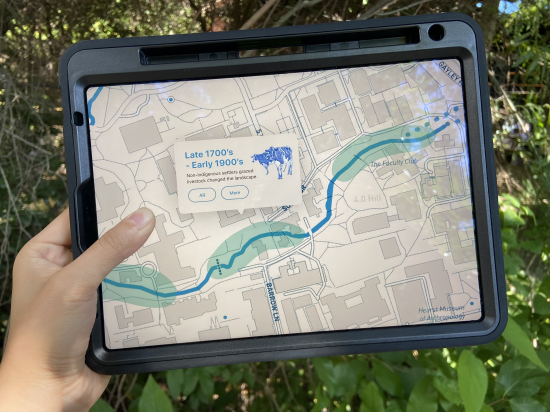
The “creek” in question, Strawberry Creek, was chosen as the project’s focal point due to its extensive history and physical closeness to participants — many of whom were either UC Berkeley students or staff. These participants often passed by Strawberry Creek, but had limited knowledge of its presence or history.
Yang and Ryokai were also inspired by the way Indigenous cultures have historically held nature in high regard. These cultures often believe nonhumans such as plants, creeks, or mountains have identities similar to humans, and that humans are younger sisters and brothers of these nonhumans. This is exceptionally different from the Western ways of thinking that humans have a higher status than nonhumans and the environment is seen as resources that stand by in order to serve human needs. With these ideological differences in mind, the two researchers sought to use their project to de-center humans and spark an appreciation for nature in its participants.
Throughout the experience, participants traversed closely along the creek with a MAR tablet, stopping to lie down and experience how the world may appear from Strawberry Creek’s perspective. The five stops correlated each with a different point in history, such as pre-colonization, industrialization, and a speculative future. While engaged in the natural, and sometimes urban, landscapes around the creek, participants were exposed to auditory, olfactory, and tactile stimuli that helped them connect deeper with the environment.
“When participants assume the role of Creek, they observe a transformation in its significance — from being the central source of life in the area to becoming a lucrative resource for humans, and then being forgotten as human priorities shift,” Yang explained. Serving as observers of the creek’s eventual neglect by humans served as a powerful stimulus to participants’ emotions, pushing them to empathize with the creek and grow more critical with each stop.
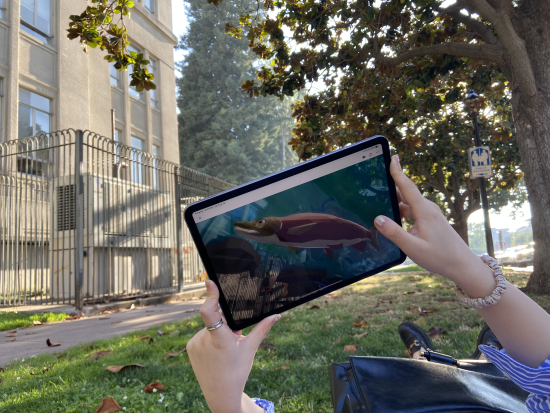
As a result, these “internal debates [about the essence of the creek] prompt individuals to reevaluate human’s impact on the environment and their relationship with the local ecosystem,” Yang added.
In particular, the two researchers noted the use of “I” statements when participants spoke about the creek’s perspective. For example, one person explained that they felt overworked from the grazing livestock at one stop; another said they felt lonely and disconnected seeing the stream disappear under the city. Eventually, many participants even felt disillusioned by humans, commenting on their skepticism towards the future.
“We hope this project can serve as an inspiration to HCI researchers, encouraging a shift of focus from human-centered design towards designing technology to understand the more-than-human world and collaborate with the nonhuman entities,” Yang noted.
As we navigate a future intertwined with technology, “Being The Creek” reminds us that innovation can coexist harmoniously with nature and be a catalyst for change. At the end of the day, humans must learn to leverage technology for good if they want to ensure a livable future. “Being The Creek” may not be the final solution for our ecological issues, but the team is hopeful that the project will inspire others to take up the helm and make more environmentally-friendly decisions from now on.






